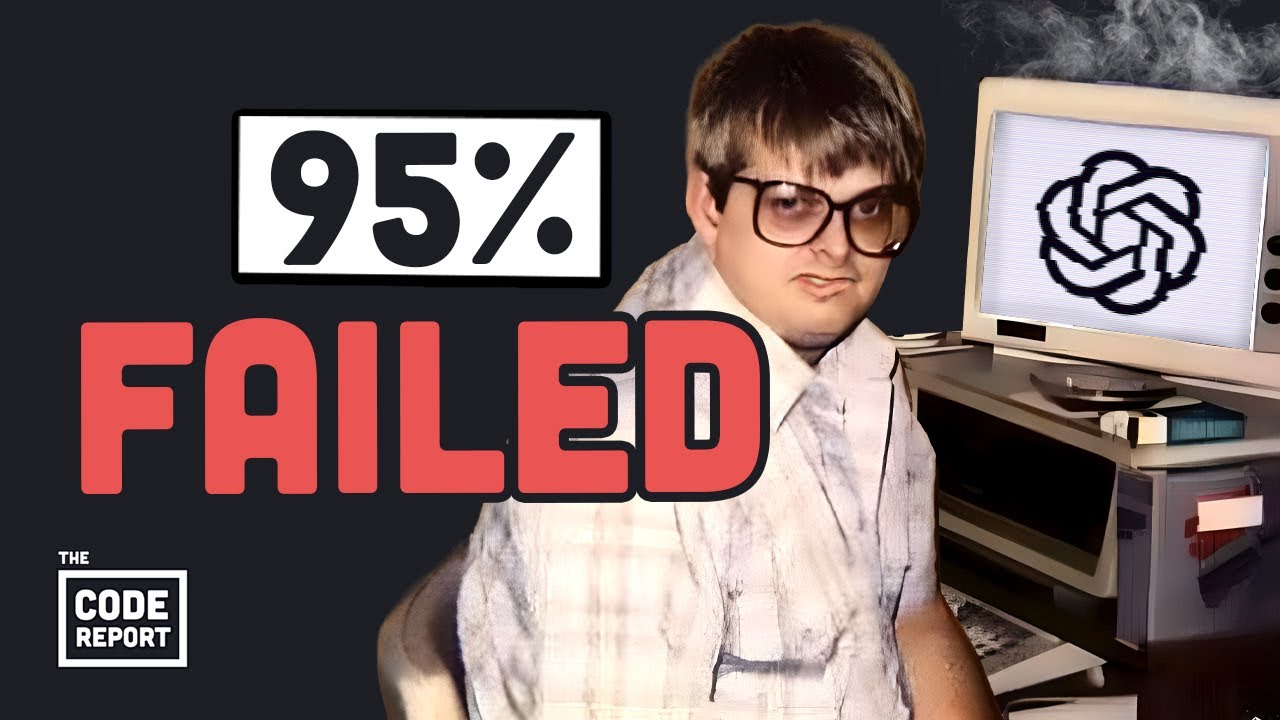A recent MIT study reveals that 95% of AI projects fail to drive rapid revenue growth, largely due to challenges in integrating AI effectively into workflows and a higher failure rate for in-house AI tool development compared to third-party solutions. Despite these setbacks, successful cases like Ignite show AI’s potential value, while tools like Tupil aim to enhance developer collaboration, underscoring that human expertise remains vital alongside AI advancements.
The video discusses a recent MIT study revealing that 95% of AI-driven projects fail to achieve rapid revenue growth, causing concern among investors and industry leaders. This statistic has contributed to growing talk in Silicon Valley about a potential AI bubble, especially as major companies like Meta have recently paused AI hiring despite heavy investments. The study analyzed 300 public AI deployments, interviewed 150 leaders, and surveyed 350 employees, highlighting that most AI integrations have little to no measurable impact on company profits.
One key finding from the study is that companies attempting to build their own AI tools tend to fail more often than those who purchase third-party solutions. The reasoning is that in-house efforts often result in inferior products compared to established AI tools available on the market. This has led to a surge in demand for enterprise AI tools, making it a lucrative time for vendors providing AI solutions rather than companies trying to develop them internally.
Despite the high failure rate, there are notable success stories. For example, Ignite, an enterprise software company, replaced 80% of its developers with AI in 2023 and now enjoys 75% profit margins two years later. This case demonstrates that AI can deliver significant value when implemented effectively. However, the MIT study emphasizes that the problem is not the AI models themselves—they are sufficiently advanced—but rather the human factors involved in integrating AI into workflows, such as poor alignment with daily operations and brittle processes.
The video also draws an analogy between AI-assisted coding and addiction, describing how initial enthusiasm can lead to overconfidence and costly mistakes. Many developers feel they can rapidly produce high-quality software with AI, but repeated attempts often result in errors and wasted resources. This suggests that despite AI’s capabilities, programmers will still be essential for the foreseeable future to manage and refine AI-generated code.
Finally, the video promotes a remote pair programming tool called Tupil, which facilitates collaboration among developers by providing low-latency screen sharing and shared control. This tool is designed to enhance teamwork and productivity, addressing some of the challenges developers face when working with AI tools. The video concludes by encouraging viewers to try Tupil and hints that human expertise remains crucial in the evolving AI landscape.
